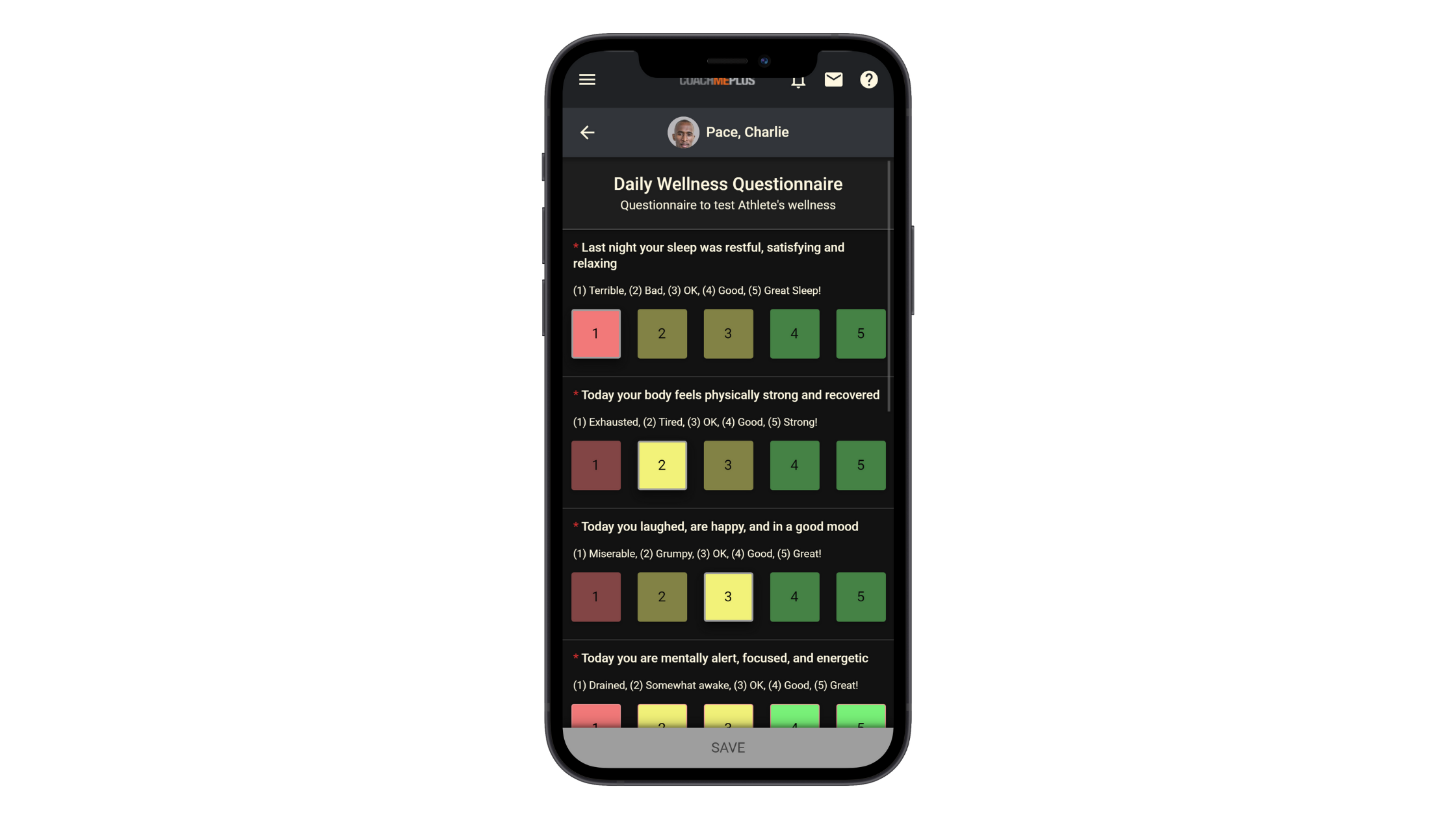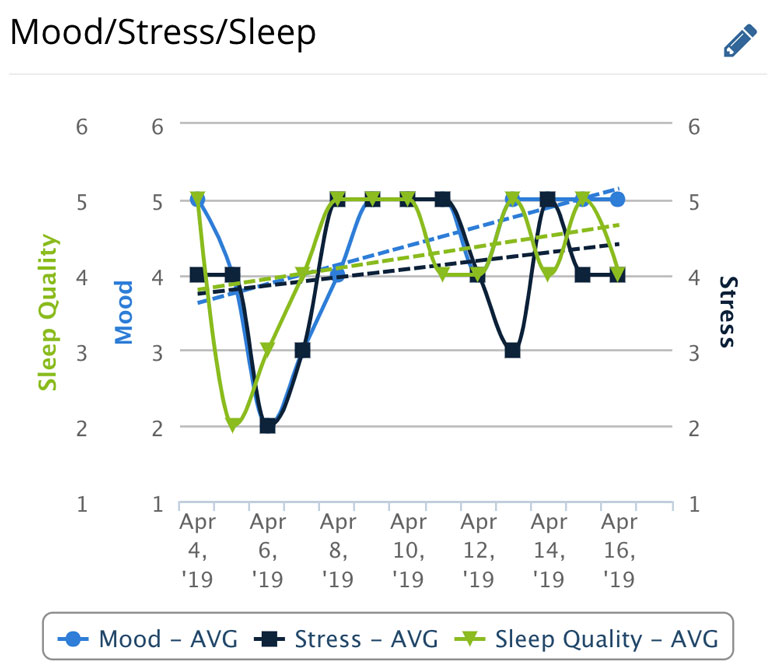This Academy Guide on fatigue covers the numerous types of fatigue, how measurement is possible, and the limitations of both recovery modalities and technology. In addition to expanding on the challenges currently faced by teams, the guide’s review section includes solutions in monitoring and load strategy. Monitoring fatigue is a difficult process since it requires the constant participation and adherence of the athletes themselves. New techniques and strategies make allowances for the limitations of fatigue monitoring, and creative workarounds are now available.
Athlete Fatigue – A Summary of Science
Fatigue is an observable pattern of athletic performance, but the best practice of measuring and managing fatigue is still not available. Effective methods of observing and quantifying changes to athlete readiness and fatigue have progressed over the last few decades, but the complexity of fatigue is still a challenge to scientists. Fatigue is an individual experience, similar to pain, and cannot be reduced to a single measure or score. Fatigue can manifest locally, systemically, or in combination. It’s common to create a binary evaluation of fatigue to the peripheral and central systems of the body, but fatigue is more complicated and intricate than brain or muscle status.
You can argue that mental fatigue, a variable that influences the central nervous system, is a separate measure that requires specialized evaluation. Compassion fatigue, or the emotional exhaustion of caretakers, is not directly sports-related, but outside of the training grounds is still part of the general life experience that we must factor into athlete monitoring. Local fatigue to the periphery, such as muscle groups, is often acute due to metabolic reaction, eccentric damage, or low glycogen status. Central fatigue is more complex, and it interacts with sleep, emotional factors, mental failure, and even circadian rhythms. Current research on the relationships between the gut and brain axis is now being considered by teams and international sports organizations.

Advanced visualizations can compile fatigue categories for trend analysis. Compartmentalizing fatigue into a specific category is convenient from a logistical desire to map athlete status, but all the systems of the human body are usually connected. The next step to evolving fatigue monitoring is to profile the types of fatigue patterns commonly seen in practice, and create coping and intervention strategies that minimize the impact of training and life stressors.
Scientifically Valid Measurements of Fatigue
A range of options exist in sport to quantify and identify fatigue, and each method has pros and cons that must be carefully weighed. There is usually an inverse relationship between the convenience of the data and the quality of the information collected. A balance between practical and scientifically valid measurements is necessary to reduce unexpected fatigue. Technology is improving the practical application of monitoring, and advances in product development are increasing the quality and depth of the data.
Research-Grade Methods
While not practical in many team settings, direct scientific testing can be used to reach a more conclusive summary of athlete fatigue. The primary reason research methods are important is that they are gold standards for comparisons to more practical and conventional approaches. Some research methods are excellent at calibrating less precise or accurate field testing.
Field Testing
If the athletes are willing and motivated, performance tests are strong indicators of fatigue because they are direct measures. The challenge with field testing is that it is a poor way to monitor change, as it takes away from the time needed to train or practice. However, if used correctly, it can both elicit a training effect and determine the severity of the fatigue.
Training Monitoring
GPS and other athlete tracking methods can detect changes in player output when enough data is available. The inclusion of player heart rate data with simultaneously recorded player motion and load can assist professionals in identifying fatigue. When subjective indicators are added to the objective data, staff can increase their confidence of identifying true fatigue rather than lack of exertion.
Biomarker Testing
Blood and saliva biomarkers are often used to observe direct changes in fatigue or exhaustion, but they are not enough to make a determination if an athlete is overtrained unless paired with additional measurements in performance and subjective reporting. Biomarker analysis is useful for identifying clear impairments, like anemia or a deficiency that could be contributing to performance incompetence.
Subjective Monitoring
Reported symptoms or ratings of wellness can be used to help clinically investigate athlete fatigue, but they are not objective or direct measures. Since athletes’ ratings of fatigue are highly variable and not specific, they should be used cautiously and require comparisons with other forms of data. Subjective monitoring is often used as a control to assist monitoring options that are only snapshots of time, as they can be implemented daily.
Physiological Monitoring
Heart rate, heart rate variability, and other measures of physical state are common in sport. Physiological monitoring of fatigue can show up in readiness tests to the autonomic nervous system (ANS) or centrally to the higher centers of the body (CNS). Local muscle testing is available, but the adoption rate of direct evaluations to the neuromuscular system (peripheral) is low in popularity with teams. Sleep monitoring with non-invasive methods has grown in popularity, but still requires clinical evaluation to determine the severity of a reported sleep impairment.
It is likely due to limited access to athletes and practical challenges that only a few of these methods can actually be implemented in a real-world setting. A few approaches may be necessary with all athletes, and several methods can be used during short periods of time that are either considered high risk or historically problematic.
Analysis and Monitoring
Monitoring fatigue requires an array of data types to properly identify the root cause of the fatigue and whether a change or adjustment is necessary. Fatigue, when it impairs both performance and the athlete’s subjective experience, should be analyzed and acted on with either planned adjustments or reactive measures. The essential requirements of monitoring and analyzing fatigue are the collection of quality information and the continuity of the data. The simple inclusion of subjective wellness questionnaires in conjunction with rating of perceived exertion is enough to reduce injury and poor performance. Additional objective information, including training load data, increases the success rate of a sports monitoring program.

Repeatedly measuring the training load and the dose response is the current best practice for monitoring fatigue. Without the training load described and measured, fatigue scores are likely to be out of context and not as actionable. In addition to the training load, lifestyle considerations such as sleep quality and duration, nutritional support, and stress management are all factors that should be included when evaluating reported fatigue. When supportive factors are not facilitated and the work load seems appropriate, a premature and unnecessary reduction in training load leads to athletes being at risk from insufficient training.
Attempts to use higher-level statistical analysis, including artificial intelligence, have met with mixed success. Due to the high volume of data and wide range of data types, identifying the absolute limit of workload and the precise fatigue pattern is arduous in Olympic sport, and even harder in team sport. Most of the success with monitoring is leveraging daily trends followed by deeper periodic assessments to fully cover the need of identifying early signs of unnecessary fatigue.
Recovery Management and Interventions
Currently, a paradigm shift in recovery is leading the change from reactive to proactive approaches in fatigue. In the past, recovery was supported with modalities and forced rest, while an interest in building capacity is trending today. Theoretically, a higher level of capacity leads to resilience to fatigue if the athlete is not pushed to a level that increases their risk. The line between planned functional overreaching and non-functional overtraining is very thin. How close an athlete stays within the threshold of acceptable fatigue that is positive in the long run depends highly on how sophisticated the monitoring program is.
Recovery modalities generally have little effect on reducing fatigue, but they do have an influence on perception of fatigue. Outside of sleep, sports nutrition, and optimal training load, recovery and regeneration techniques are mainly complementary and help with prophylactic responses and possibly management of soreness. Several artificial interventions may be counterproductive and blunt the natural internal response mechanisms; thus, the right timing and recovery technique must be researched extensively.
Strategic rest is controversial for several reasons, but mostly because star athletes sitting out games poses a problem for fans attending competitions. Resting before the playoffs elicits criticism from those who believe it interrupts the rhythm of the schedule, causing poor technical and tactical chemistry. Regardless of the philosophical aspects of resting athletes, tapering and planned rest strategies have merit and should be considered as part of athlete well-being and player performance.
Compliance Challenges with Monitoring Technology
The most common obstacle with monitoring physical fatigue is simply athlete compliance. Athletes who have used fatigue monitoring in the past tend to get burned out on it, or find the process mundane. In addition to the individual athletes, league players’ associations have limited the ability to monitor fatigue, due to the constraints of the collective bargaining agreements and other legal contracts. Practitioners are aware of the athlete compliance factor, and made several adjustments to avoid either player conflict or the burden of collecting data with the following modifications:
1. Athlete support should be triggered by athlete reporting of fatigue or unexpected orthopedic complaints. Communication that is structured and organized fosters a more effective monitoring process.
2. Improved workflow for collecting data minimizes a decrease in athlete participation rates. Efforts to streamline the monitoring process should be considered as much as possible.
3. Mental health interventions should be encouraged to help avoid athlete endangerment and chemical dependence. With the rise in concussions, athlete subjective reports are necessary for clinical diagnosis and recovery tracking.
4. Smartphone technology increases the possibility of using both subjective and objective physiological monitoring. Incorporating communication and measurement with valid apps is recommended.
5. Sleep monitoring, whether voluntary or required, relies on device validation and professional support. Specialists in sleep or education in sport-specific information should be considered.
Similar to user experience with wearables, fatigue monitoring must overcome the human obstacle of not only collecting the data, but convincing others involved to make different choices than what they are comfortable with. Athlete, coach, and administrator education is a good starting point, but organizational policies are necessary to make progress in decision-making with player fatigue.

CoachMePlus is a comprehensive solution for any training environment, ranging from scholastic level to pros, and including both military and private facilities.

Recent Comments